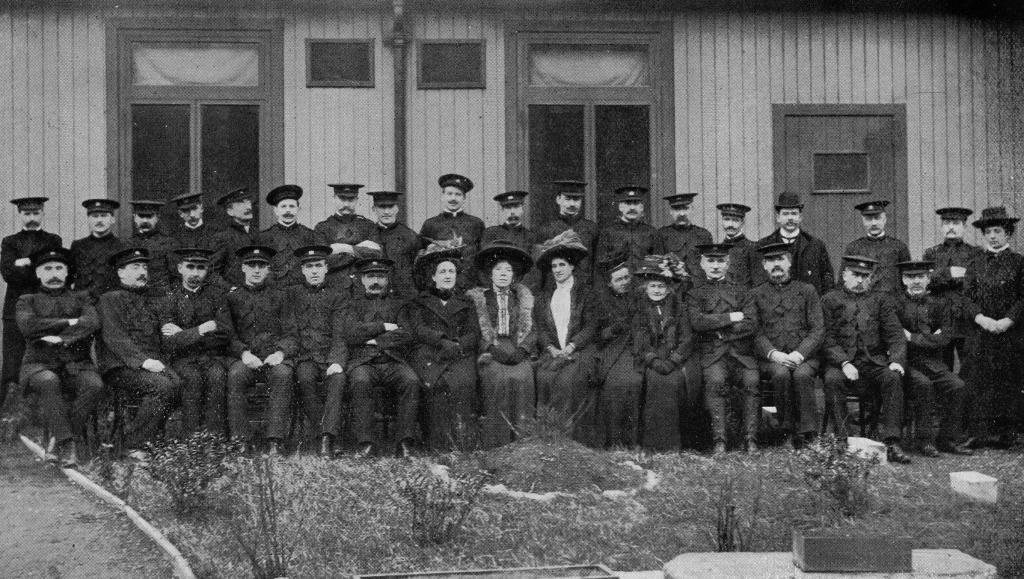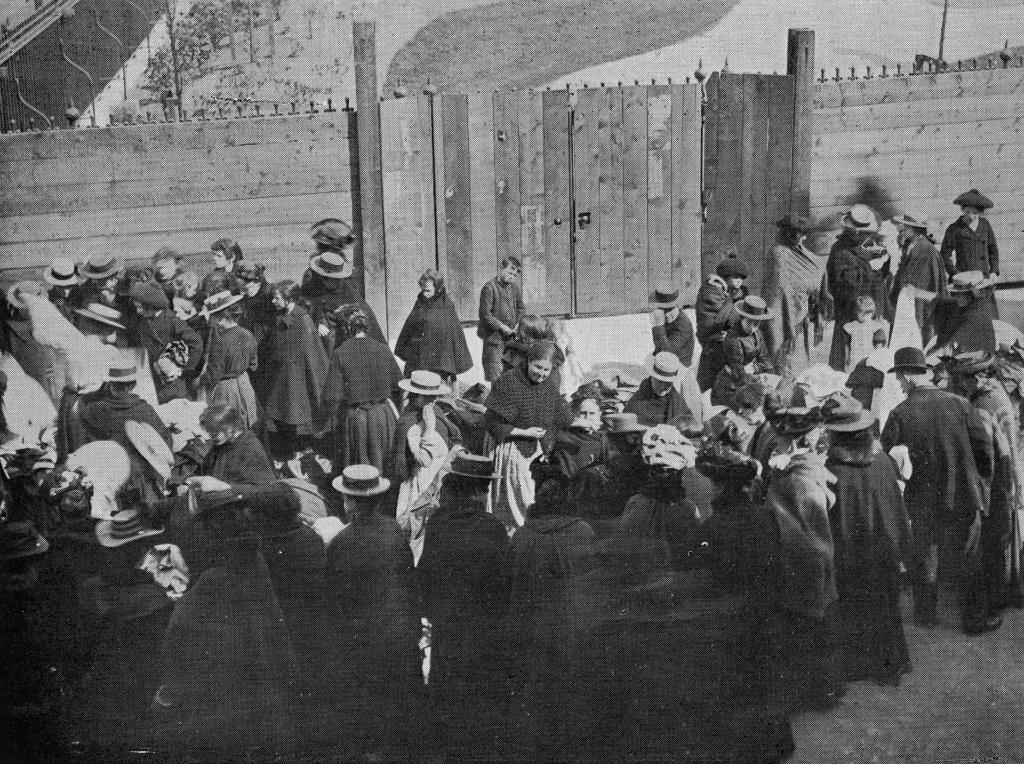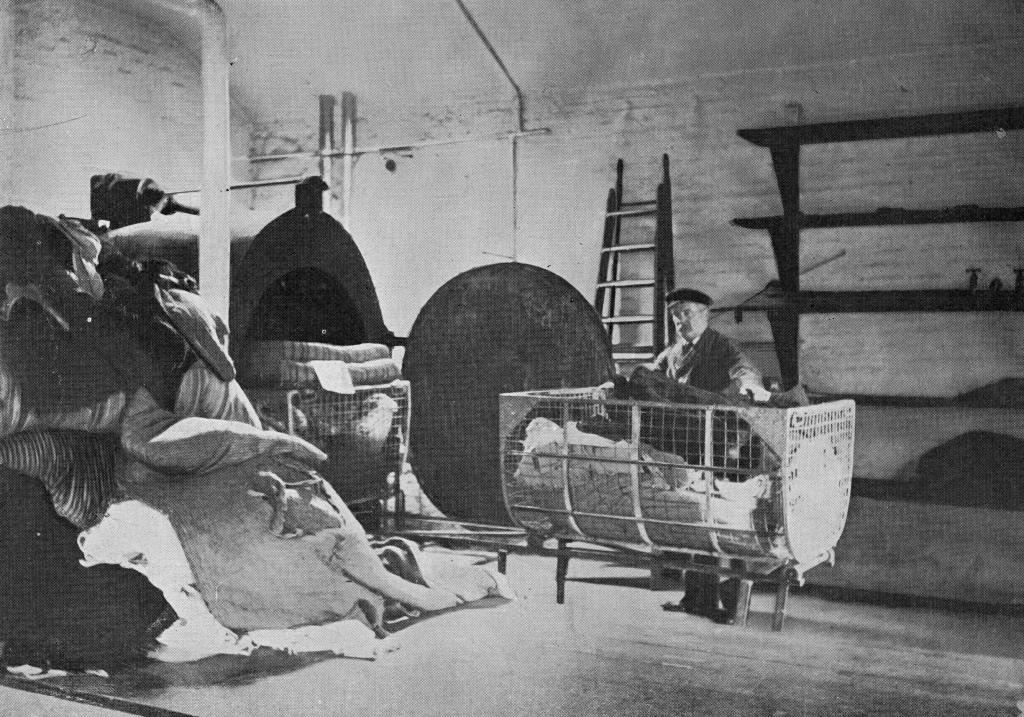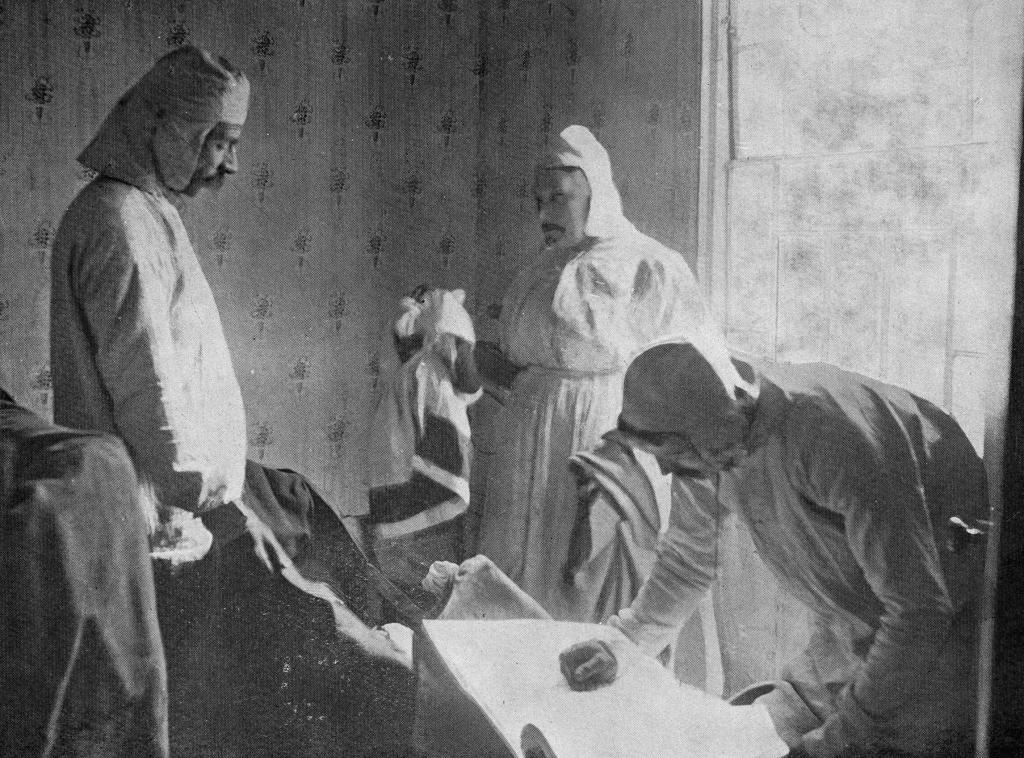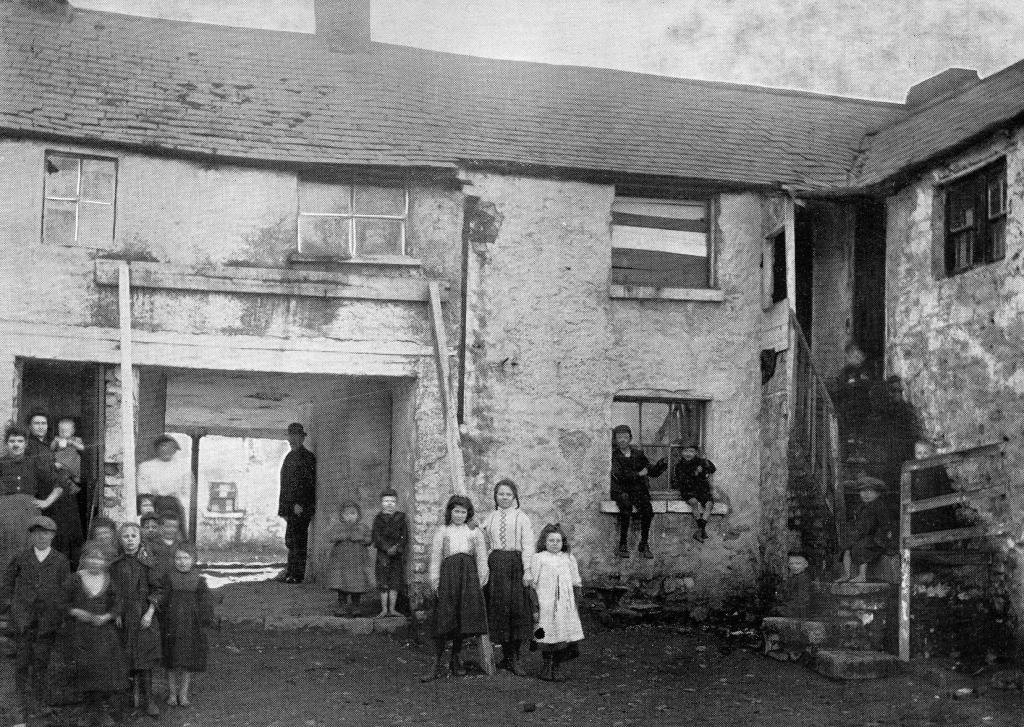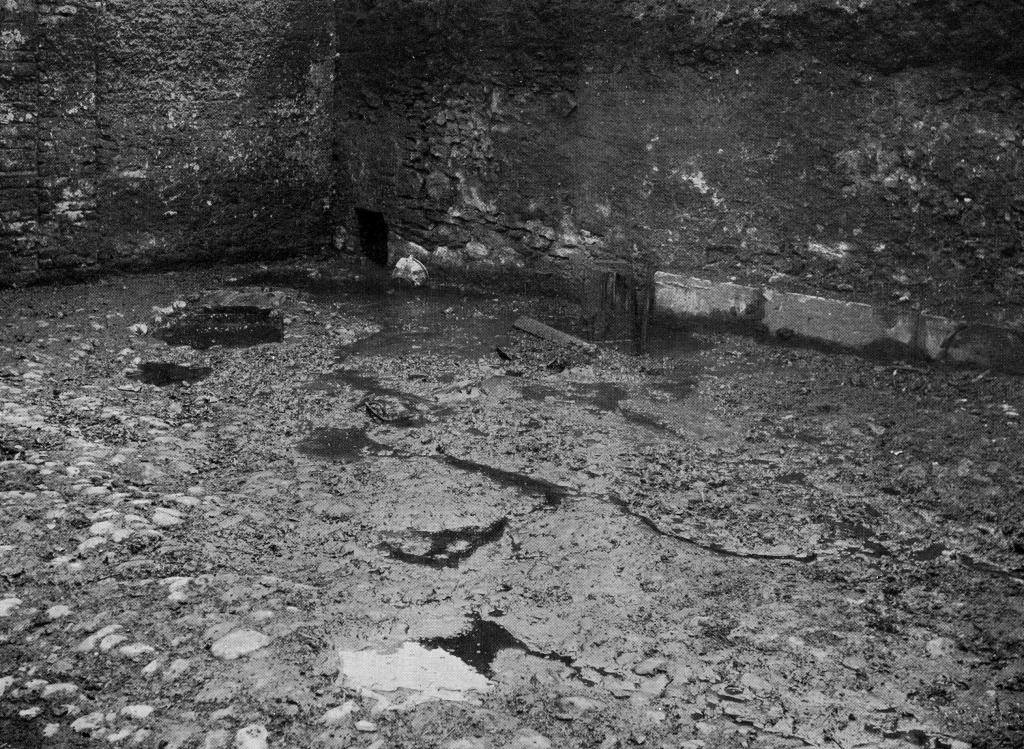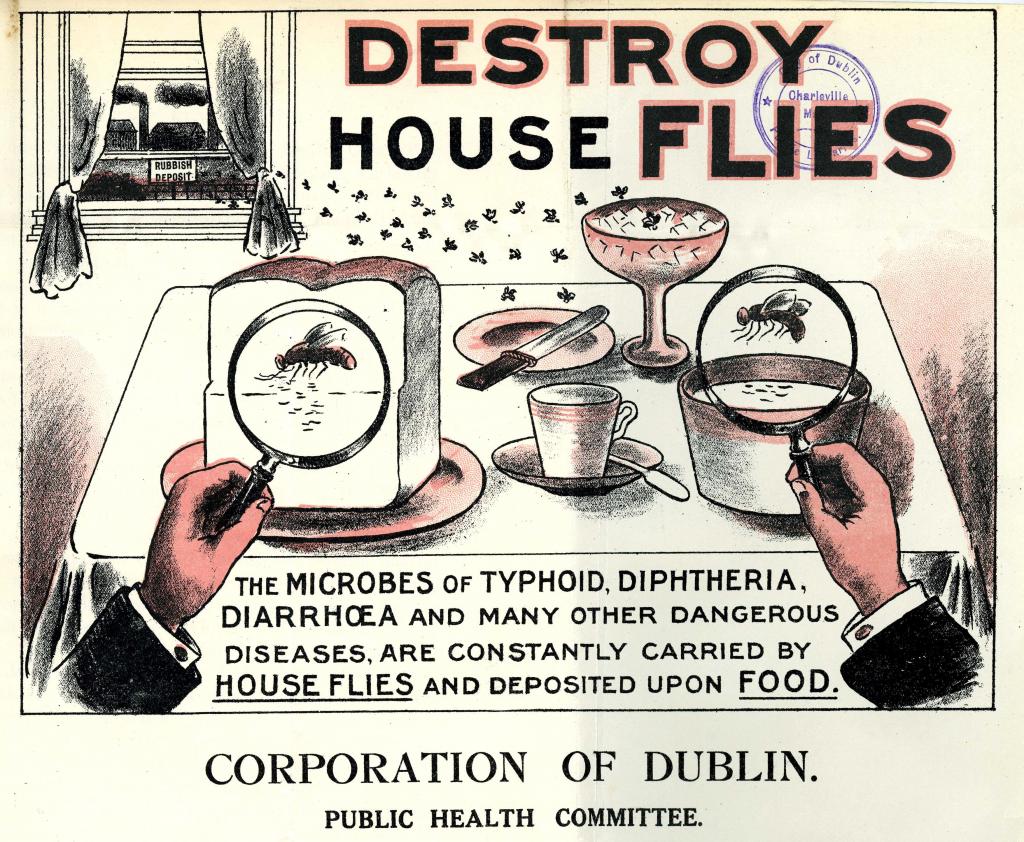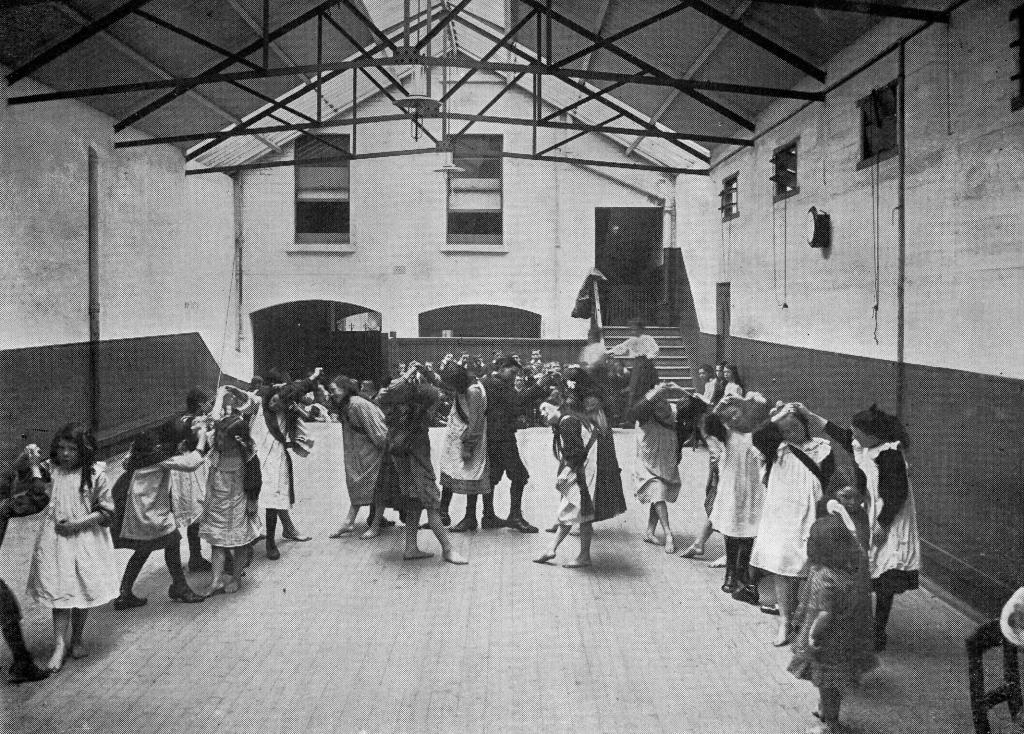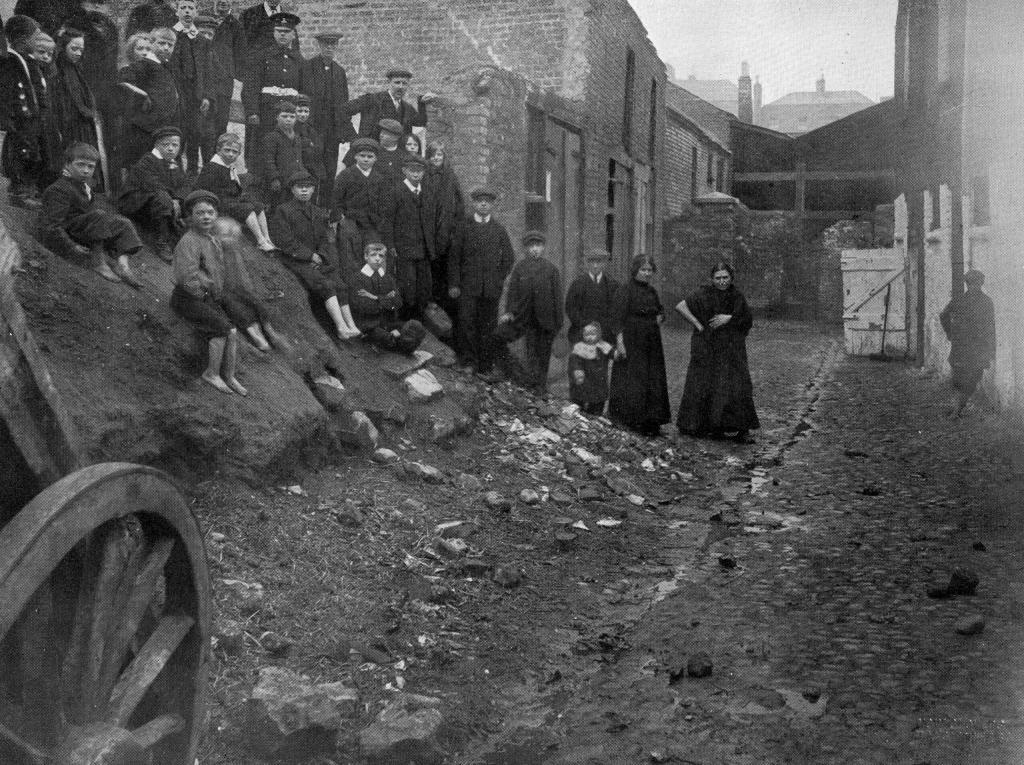Galleries
Dirt and Disease Collection
Source: Dirt and Disease Collection, Public Health in Dublin 1903-1917, Dublin City Archive
DD002 Sanitary Inspectors, 1909
The Corporation provided one of the first career outlets for women in the public service. Each one had to hold a Certificate in Sanitary Science from the Royal Institute of Public Health. Their reports provided information not just on public health but changing fortunes of families visited.
DD004 The Male Ward of the Smallpox Hospital, 1903
The Smallpox hospital was moved to the Pigeon House beside the TB isolation hospital to minimise the threat to the wider population. It was previously in Hardwicke Street. Dirt and disease were coterminous in the city.
DD006 The Rag Fair, ca 1905
The Rag Fair was located in Patrick Street. People bought, sold and exchanged clothes, footwear and domestic utensils that were often vectors of infection, but many families could not afford to buy anything new.
DD008 Nurney’s Court, 1908
Dublin Sanitary Inspectors made 196,347 visits to Dublin tenements and courts in 1908 alone. Unfortunately, prosecutions or closing orders rarely followed as there was no alternative accommodation for families evicted from condemned buildings.
DD022 New Corporation Housing, 1911
Before the First World War, Dublin Corporation only built 1,385 houses and flats. It built another 858 by 1922, by which time between 50,000 and 60,000 people urgently needed rehousing. Labour councillors, all of them trade unionists and many representing the building trades, constantly campaigned for more resources to be put into housing but the continual crises from the Lockout in 1913 until the end of the Civil War in 1923 meant there was little funding available.
DD032 Tara Street Baths, 1912
The new municipal public baths and wash house provided Dubliners not alone with a centre for safe recreational activity, such as these DMP trainees, but a facility for washing themselves and their clothing. Its temporary closure towards the end of the First World War because of coal shortages forced tenement families to revert to carrying buckets of water up four or five storeys to fill tin baths in their homes, if they had a tin bath.
DD026 The killing machine, 1911
An attendant prepares to put a load of contaminated clothing into the Washington Lyons machine to destroy all germs. Special baths were provided to deal with ‘verminiferous’ patients.
DD025 Disinfectors at work, 1911
Disinfectors removing clothing to be treated after residents removed to an isolation ward for treatment of serious infection. There was always fear of outbreaks of serious diseases such as typhus and small pox, not to mention scabies.
DD019 Gorman’s Yard, Inchicore, 1911
This shows that tenements and courts were not confined to the inner city.
DD012 Crabbe Lane Sewage 1910
The lanes and courts of Dublin were not maintained by the Corporation Cleansing Department but over 16,000 Dubliners lived in them at increased risk to their health. No matter how much was done to improve public health awareness the appalling living conditions of many Dubliners was the main obstacle to higher life expectancy rates.
DD033 The Fly Peril, 1914
A leaflet distributed in the summer of 1914. The advent of warm weather was often accompanied by outbreaks of diarrhoea and enteritis, which could often prove fatal, especially for babies and those with poor immune systems.
Health Warning, 1914
An early ‘fly’ poster issued by Sir Charles Cameron, Dublin’s Chief Medical Officer. Lack of public health education was a major factor in Dublin’s high mortality rates, especially amongst infants.
DD016 Lord Iveagh playground, 1911
The playground was built and enclosed in Francis Street and could accommodate up to a thousand children. Callisthenics, dancing and singing were among the activities. Every child also received a mug of cocoa and a bun each evening.

